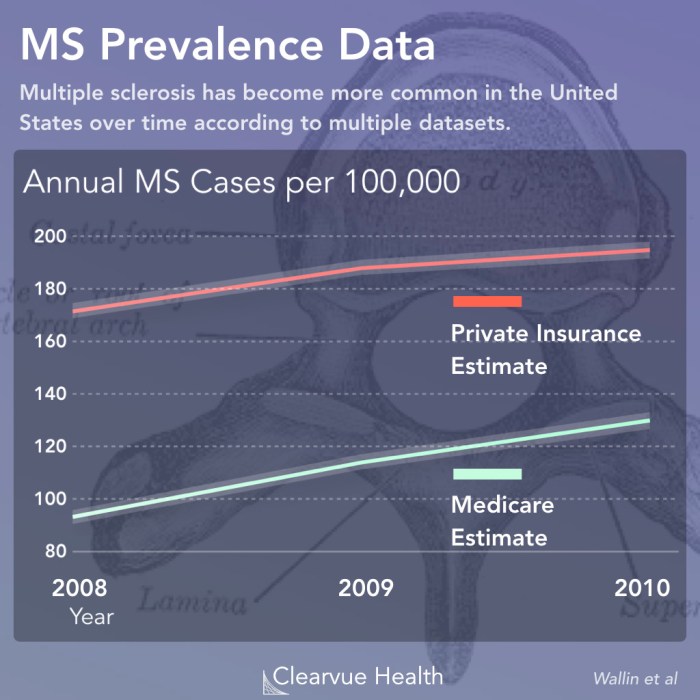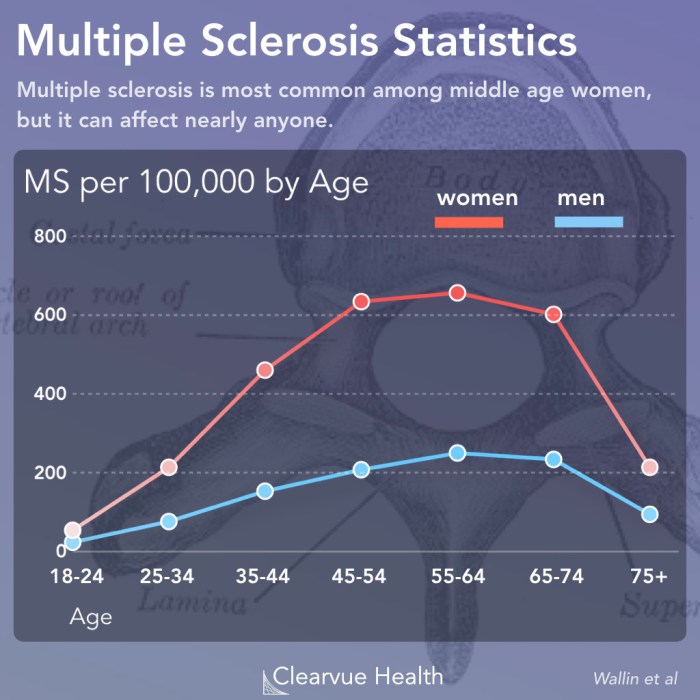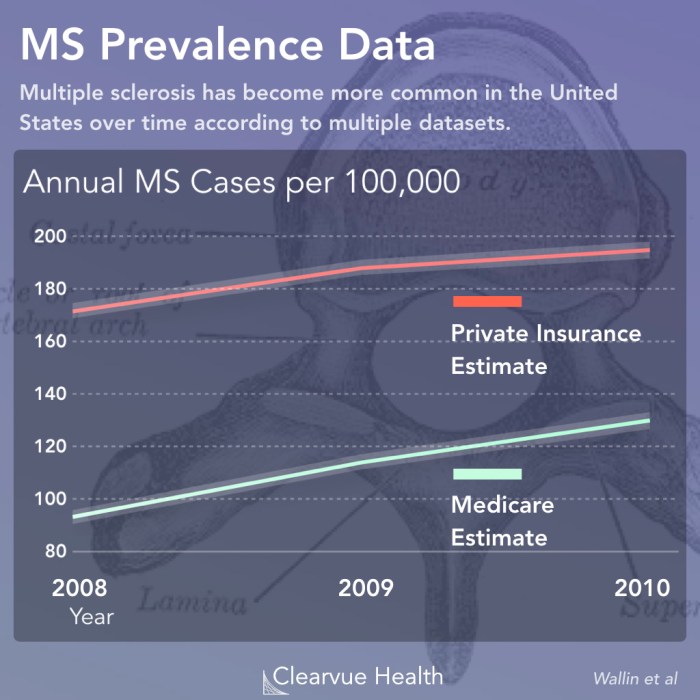What to eat when you have the stomach flu is crucial for recovery. This guide delves into the dos and don’ts of nutrition during a stomach bug, from understanding the causes and symptoms to practical hydration strategies and dietary adjustments for different stages of recovery. It also covers the importance of preventing the spread of this common ailment.
Understanding your body’s needs during this challenging time is key to getting back on your feet quickly. We’ll explore the foods to avoid, the best foods to consume for quick recovery, and the essential hydration techniques to combat dehydration, all presented in an easy-to-understand format. Get ready to navigate the tricky waters of stomach flu nutrition and emerge victorious!
Understanding the Stomach Flu

The stomach flu, also known as gastroenteritis, is a common illness characterized by inflammation of the stomach and intestines. It’s often uncomfortable and disruptive, but usually resolves on its own within a few days. Understanding the causes, symptoms, and potential complications can help you manage the illness effectively.The symptoms of gastroenteritis can vary in severity, but generally involve digestive upset.
When you’ve got the stomach flu, bland foods are key. Think clear broth, toast, and bananas. While dealing with digestive upset, it’s important to remember that skin conditions like psoriasis and ringworm can sometimes share similar symptoms, making diagnosis tricky. For a deeper dive into distinguishing between these conditions, check out this helpful resource on psoriasis vs ringworm symptoms causes treatment psoriasis vs ringworm symptoms causes treatment.
Keeping your diet simple and easily digestible will help your body recover from the flu much faster.
These range from mild discomfort to severe cramping and pain, accompanied by nausea, vomiting, and diarrhea. These symptoms can be debilitating, making it difficult to perform daily activities.
Symptoms of Stomach Flu
Gastroenteritis is typically marked by a combination of symptoms affecting the digestive system. These include nausea, vomiting, stomach cramps, and diarrhea. Some individuals may also experience fever, chills, or headaches. The intensity of these symptoms can vary significantly from person to person.
Causes of Stomach Flu, What to eat when you have the stomach flu
Gastroenteritis is most commonly caused by viral or bacterial infections. Viruses like norovirus and rotavirus are frequent culprits, often spreading quickly in close-quarters settings like schools or hospitals. Bacterial infections, such as those caused by Salmonella or E. coli, can also lead to gastroenteritis, often linked to contaminated food or water.
Importance of Hydration
Adequate hydration is crucial during a stomach flu. The vomiting and diarrhea associated with the illness can lead to significant fluid loss, potentially causing dehydration. Drinking plenty of fluids, such as water, clear broths, or electrolyte drinks, is essential to replenish lost fluids and prevent dehydration. Symptoms like dizziness, lightheadedness, or dry mouth can indicate dehydration and warrant immediate attention.
Duration of Stomach Flu
The duration of a stomach flu can vary depending on the causative agent and the individual’s immune response. Most cases of viral gastroenteritis typically last from one to three days. Bacterial infections can sometimes persist for a longer duration. It’s important to monitor symptoms and seek medical advice if the illness persists beyond a week or worsens significantly.
Potential Complications of Severe Stomach Flu
Severe cases of gastroenteritis can lead to complications such as dehydration, electrolyte imbalances, and in rare instances, hospitalization. Dehydration can cause weakness, dizziness, and confusion. Electrolyte imbalances can affect various bodily functions. If you experience severe or persistent symptoms, seek medical attention promptly.
Summary Table
| Symptom | Cause | Duration | Potential Complications |
|---|---|---|---|
| Nausea, vomiting, diarrhea, stomach cramps | Viral (e.g., norovirus, rotavirus) or bacterial (e.g., Salmonella, E. coli) infections | Typically 1-3 days, potentially longer for bacterial infections | Dehydration, electrolyte imbalance, hospitalization (in severe cases) |
Foods to Avoid
A stomach flu can wreak havoc on your digestive system, making even simple meals feel like a burden. Knowing what to avoid during this time can greatly lessen discomfort and aid in your recovery. The following guidelines highlight foods that can exacerbate symptoms, and why.The key to managing a stomach flu is to minimize any further stress on your already sensitive digestive tract.
Certain foods can stimulate digestive processes, potentially worsening nausea, vomiting, diarrhea, and abdominal cramps. This often leads to further dehydration, and prolonging the recovery process.
Foods That Can Worsen Symptoms
Foods high in fat and acidity can be particularly problematic during a stomach flu. Your body’s resources are diverted to fighting the infection, making it more challenging to digest these types of foods. The increased strain on the digestive system can intensify symptoms and slow down recovery.
- Greasy foods: Fried foods, fatty meats, and creamy sauces are notorious for their difficulty in digestion. The high fat content takes longer to process, putting added stress on the digestive tract, potentially causing increased cramping, nausea, and diarrhea. Think of a greasy pizza or a rich, creamy pasta dish – these can be major triggers during a stomach bug.
- Spicy foods: Chili peppers, curry, and other spicy foods can irritate the already inflamed lining of the stomach and intestines. This can exacerbate diarrhea and abdominal discomfort. While a little spice might seem appealing, it’s best to avoid it during a stomach flu to prevent further digestive distress.
- High-fiber foods: Foods rich in fiber, while generally beneficial, can be difficult for your body to digest when it’s fighting an infection. This can lead to increased gas, bloating, and diarrhea. Examples include whole grains, beans, and many fruits and vegetables. The increased digestive effort may worsen discomfort.
High-Fiber Foods to Avoid
A healthy diet usually includes fiber, but during a stomach flu, your body’s digestive capabilities are already compromised.
- Beans and lentils: These legumes are excellent sources of fiber but are quite difficult to digest. During an infection, the extra strain on your system can result in increased gas, bloating, and diarrhea. Instead, focus on easily digestible foods.
- Whole grains: Brown rice, whole wheat bread, and other whole grains are rich in fiber. The high fiber content can be hard for your system to manage during a stomach flu, potentially causing further digestive issues.
- Fruits and vegetables with high fiber content: While fruits and vegetables are generally healthy, certain varieties, such as broccoli, cabbage, and some raw fruits, contain high fiber. These can be more difficult to digest during an infection, potentially leading to increased gas, bloating, and diarrhea.
Reasons for Avoiding Certain Foods
The reasons for avoiding certain foods during a stomach flu boil down to their impact on your digestive system.
- Increased digestive workload: Your body is already working hard to fight the infection. Foods high in fat, fiber, or acidity place an additional burden on your digestive system, potentially worsening symptoms.
- Irritated intestinal lining: Certain foods can irritate the already inflamed lining of the stomach and intestines, exacerbating diarrhea and discomfort. Spicy foods are a prime example of this.
- Dehydration risk: Diarrhea and vomiting associated with a stomach flu can lead to significant dehydration. Foods that are hard to digest can further complicate this by increasing the digestive workload and possibly worsening diarrhea.
Impact of Greasy Foods
Greasy foods are particularly problematic during a stomach flu due to their high fat content.
Digesting fats requires significant digestive enzymes and energy. When your body is fighting an infection, these resources are already stretched thin, making it harder to process fatty foods, which can lead to increased nausea, vomiting, and abdominal cramping.
Comparing Food Effects
Different foods have different effects on the stomach during a stomach flu.
| Food Type | Potential Effect |
|---|---|
| Greasy foods (fried foods, fatty meats) | Increased nausea, vomiting, cramping, diarrhea |
| Spicy foods (chili peppers, curry) | Irritated intestinal lining, increased diarrhea |
| High-fiber foods (beans, whole grains) | Increased gas, bloating, diarrhea |
| Easily digestible foods (clear broth, bananas, rice) | Support hydration, ease digestive burden |
Foods to Eat
When battling a stomach flu, your body needs gentle nourishment to recover. Focusing on easily digestible foods is crucial to avoid further discomfort and allow your digestive system to rest. This approach minimizes strain on your stomach, allowing it to heal and recover from the virus.
So, you’ve got the stomach flu – yuck! Bland foods are key, like toast, rice, and clear broth. But, have you ever wondered why your thumb might be tingling? It could be a sign of something more serious, like a pinched nerve or circulation issue. If you’re experiencing this, check out this helpful resource on why is my thumb tingling for more information.
Regardless of the tingling, sticking to easily digestible foods will help your body recover from the flu faster. Think plain pasta, bananas, and applesauce. Keep it simple!
Gentle Foods for a Sensitive Stomach
Your stomach is already working hard to fight the virus, so it’s important to provide it with foods that are easy to digest. These foods are low in fiber and fat, promoting minimal irritation to the intestinal lining. Choosing these foods helps your body conserve energy for recovery and reduces the risk of further digestive upset.
Easily Digestible Foods List
These foods are generally well-tolerated during a stomach flu and are easily processed by the digestive system:
- Plain, Cooked Rice: White rice is a staple for a reason. Its simple structure makes it easily digestible, providing a source of carbohydrates for energy without overwhelming the digestive tract.
- Plain, Cooked Chicken Breast: Lean protein is important for recovery, and chicken breast is an excellent choice. When cooked and shredded, it’s very gentle on the stomach, providing much-needed protein without excessive fat or fiber.
- Clear Broths and Soups: Broths, especially chicken or vegetable broth, offer hydration and electrolytes lost through vomiting and diarrhea. The broth is easily absorbed, aiding in replenishing fluids and essential minerals.
- Bananas: Bananas are a good source of potassium, often lost during illness. Their soft texture makes them easy on the stomach and provides a gentle source of carbohydrates.
- Toast or Crackers (Plain): Plain, white toast or crackers are low in fiber and can provide some comfort and energy without causing further digestive issues. Choose the plainest variety to minimize potential irritants.
- Applesauce: Applesauce is a smooth, easily digestible fruit option that offers some vitamins and minerals without the harshness of raw fruit.
- Yogurt (Plain and Unsweetened): Plain, unsweetened yogurt, particularly if it is low in sugar, can be a source of probiotics that may help rebalance the gut flora.
Reasons for Choosing Specific Foods
The rationale behind selecting these foods lies in their minimal impact on the digestive system. The lack of fiber and fats allows for easier digestion and reduces the risk of bloating or cramping. This approach helps prevent further irritation to the stomach and promotes healing. Consuming these foods helps minimize further strain on your already compromised digestive system.
Nutrient Intake During Illness
Despite a reduced appetite, it’s vital to maintain some nutrient intake. Your body still needs energy and nutrients to fight the infection and recover. These easily digestible foods, while limited in variety, provide essential calories and nutrients. Prioritize hydration alongside these foods, as fluid loss is common during a stomach flu.
Examples of Quick Recovery Foods
For quicker recovery, focus on foods rich in electrolytes and easily absorbed nutrients. For example, incorporating plain chicken broth, easily digestible carbohydrates like rice, and clear soups can help replenish lost fluids and provide energy. These foods allow the body to focus on recovery rather than digestion.
Foods to Eat Table
| Food Category | Examples | Ease of Digestion |
|---|---|---|
| Carbohydrates | Plain rice, toast, crackers | High |
| Protein | Chicken breast (shredded), plain yogurt | Medium |
| Fluids | Broths, clear soups | High |
| Fruits (soft) | Bananas, applesauce | Medium |
Hydration Strategies
Staying hydrated is crucial when battling the stomach flu. Dehydration can quickly worsen symptoms and prolong recovery. Proper hydration replenishes lost fluids and electrolytes, which are essential for your body’s functions during illness. It’s important to focus on clear fluids that are easy on the stomach.Electrolyte balance is vital during a stomach flu. Your body loses essential minerals like sodium, potassium, and chloride through vomiting and diarrhea.
These minerals are crucial for maintaining proper fluid balance, nerve function, and muscle contractions. Without adequate electrolytes, you may experience fatigue, weakness, and further complications.
Importance of Rehydration
Rehydration is critical for alleviating symptoms and promoting recovery. It helps restore fluid balance, prevents dehydration, and supports the body’s natural healing process. Dehydration can lead to severe complications, including electrolyte imbalances, which can further strain your body’s ability to fight off the infection.
Methods for Rehydration
Several methods can help you rehydrate effectively. These methods range from simple solutions to more specialized electrolyte drinks.
- Oral Rehydration Solutions (ORS): These solutions are specifically formulated to replenish electrolytes and fluids lost during illness. ORS are often readily available in pharmacies or grocery stores. They are typically more effective than water alone because they replace lost electrolytes.
- Electrolyte Drinks: Many commercially available sports drinks contain electrolytes, making them helpful for rehydration. However, some sports drinks are high in sugar, which might not be suitable for a sensitive stomach. Choose brands with a lower sugar content and focus on electrolyte replenishment.
- Homemade Electrolyte Solutions: Preparing your own electrolyte solution at home is a cost-effective and customizable option. This method allows you to control the ingredients and avoid excessive sugar content.
Preparing Homemade Electrolyte Solutions
Creating a homemade electrolyte solution is easy and allows for precise control over ingredients. Here’s a simple recipe:
1 liter of water, 1/2 teaspoon salt, 1/4 teaspoon baking soda, 1/4 teaspoon potassium chloride. Combine all ingredients and stir until dissolved.
This solution provides essential electrolytes and can help to prevent dehydration. Remember to adjust the amount of salt and potassium chloride according to individual needs and tolerance. This recipe provides a balanced electrolyte mix.
Signs of Dehydration and Prevention
Recognizing signs of dehydration is crucial for prompt intervention. Dehydration can develop rapidly during a stomach flu, and its symptoms can be subtle.
- Dry Mouth and Throat: A persistently dry mouth and throat are early signs of dehydration. This can be relieved by drinking fluids frequently.
- Dark Urine: Dark yellow or amber-colored urine is a significant indication of dehydration. Clear or pale yellow urine is a sign of proper hydration.
- Headache and Fatigue: A headache and feeling unusually tired or fatigued could also indicate dehydration. Staying well-hydrated will combat these symptoms.
- Decreased Urination: Reduced urination frequency can be a sign of dehydration. Regular urination is a key indicator of sufficient fluid intake.
To prevent dehydration, drink fluids frequently, even if you don’t feel thirsty. Sipping on fluids regularly is more effective than large gulps. Monitoring your urine color is a useful self-assessment tool.
Comparison of Rehydration Options
Different rehydration methods have varying effectiveness. ORS solutions are specifically formulated for rehydration and are generally more effective than water alone. Electrolyte drinks can be a convenient option, but some contain excessive sugar. Homemade solutions allow for customization but require careful ingredient measurement.
| Rehydration Method | Benefits |
|---|---|
| Oral Rehydration Solutions (ORS) | Specifically formulated for electrolyte and fluid replenishment, generally more effective than plain water. |
| Electrolyte Drinks | Convenient option, but some contain high sugar content. |
| Homemade Electrolyte Solutions | Cost-effective, customizable, and allows for precise electrolyte control. |
Dietary Considerations for Different Stages of Recovery
Recovering from the stomach flu is a gradual process, and your diet plays a crucial role in your body’s ability to heal. As your symptoms subside, your digestive system will slowly regain its function. This means a cautious approach to reintroducing solid foods is essential to avoid exacerbating the issue and to promote a smoother recovery.A personalized approach is key, tailored to your individual needs and how your body responds.
Listen to your body’s cues, and don’t rush the process. A gradual reintroduction of food groups, starting with easily digestible options, is often the most effective strategy.
Initial Recovery Stage (First 24-48 Hours)
This stage is characterized by nausea, vomiting, and abdominal cramps. Your body is working hard to recover from the infection, and your digestive system is likely still very sensitive.
- Clear Liquids are paramount. Water, clear broths (like chicken or vegetable), and clear fruit juices (apple or white grape) are ideal. These are easily digested and help replenish lost fluids without putting undue strain on your stomach.
- Avoid strong flavors, and highly acidic foods like citrus fruits or tomatoes, which may exacerbate nausea or discomfort.
- Small, frequent sips of liquids throughout the day, rather than large amounts at once, is often more manageable.
Transitional Stage (48-72 Hours)
As symptoms lessen, you can start to introduce very soft, easily digestible foods. This phase is about gently reintroducing nutrients without overloading your system.
- Bland, easily digestible foods are the best choices. Examples include plain white toast, saltines, rice porridge, and plain, cooked, peeled bananas.
- Avoid anything overly spicy, fatty, or greasy, which can still irritate the stomach lining. Avoid fried foods and processed meals at this stage.
- Continue to consume clear liquids to maintain hydration. Limit or avoid milk products in this stage. They can be hard for the stomach to digest.
Full Recovery Stage (Beyond 72 Hours)
Your digestive system is functioning better, and you can gradually introduce a wider range of foods. It’s still important to proceed with caution, to avoid any setbacks.
- Gradually reintroduce other food groups, like lean proteins (cooked chicken or fish), and low-fiber vegetables (mashed sweet potatoes or carrots).
- Increase your intake of easily digestible carbohydrates, like cooked pasta, white rice, and potatoes.
- Introduce mild fruits like cooked apples or bananas, in small portions.
- Continue to listen to your body. If you experience any discomfort, go back to a more basic diet.
Dietary Guidelines Table
| Stage of Recovery | Dietary Guidelines |
|---|---|
| Initial (First 24-48 Hours) | Clear liquids (water, broth, clear juices); small, frequent sips; avoid strong flavors and acidic foods. |
| Transitional (48-72 Hours) | Bland, soft foods (plain toast, saltines, rice porridge, bananas); avoid spicy, fatty, or greasy foods; continue clear liquids. |
| Full Recovery (Beyond 72 Hours) | Gradually reintroduce other food groups (lean proteins, low-fiber vegetables, mild fruits); increase intake of easily digestible carbohydrates; proceed with caution. |
Tips for Preventing the Spread of the Stomach Flu

Staying healthy and preventing the spread of the stomach flu is crucial for protecting yourself and those around you. Understanding the key hygiene practices and proactive measures can significantly reduce your risk of infection. These practices are especially important in situations where close contact is inevitable, such as schools, workplaces, and public gatherings.The stomach flu, often caused by viruses like norovirus, spreads rapidly through contaminated food, surfaces, and close contact.
When your stomach’s upset, bland is best – think toast, rice, and bananas. But, did you know that some people believe spicy foods can actually aid in weight loss? Studies on spicy food weight loss are ongoing, but for now, stick to easily digestible foods like plain chicken broth and crackers while your tummy recovers.
It’s all about getting those nutrients back in your system, one gentle bite at a time.
Implementing preventive measures minimizes the risk of infection and protects vulnerable populations.
Hygiene Practices for Preventing Spread
Effective hygiene practices form the cornerstone of preventing the spread of the stomach flu. Regular and thorough handwashing, coupled with proper disinfection of contaminated surfaces, are vital steps in reducing the risk of transmission.
- Frequent and Thorough Handwashing: Washing your hands frequently and thoroughly with soap and water is paramount in preventing the spread of the stomach flu. This simple act can remove the virus from your hands, significantly reducing the risk of transmission. Wash your hands for at least 20 seconds, ensuring you cover all surfaces, including the backs of your hands, between your fingers, and under your nails.
Use warm water and plenty of soap.
- Disinfecting Contaminated Surfaces: Contaminated surfaces, such as doorknobs, countertops, and shared utensils, can harbor the virus. Thorough disinfection of these surfaces is crucial in preventing further transmission. Use a disinfectant solution that is effective against norovirus, following the product instructions carefully. Ensure you clean surfaces in a way that removes visible dirt and debris before disinfecting.
- Proper Food Handling: Proper food handling practices are critical to prevent foodborne illnesses and the spread of stomach flu. Always wash fruits and vegetables thoroughly before consumption. Cook food to the proper temperature to kill any potential viruses or bacteria. Separate raw and cooked foods to avoid cross-contamination.
- Isolation of Infected Individuals: Isolating infected individuals is an essential step in preventing the spread of the stomach flu. If someone in your household or a close contact has the stomach flu, it’s crucial to keep them separate from others as much as possible to limit the exposure of other family members or close contacts. This includes using separate utensils, towels, and bathrooms if possible.
Public Health Practices
In public places, understanding the spread of the stomach flu and adopting best practices is crucial for community health. Public awareness and cooperation are essential for preventing widespread outbreaks.
- Maintaining Hygiene in Public Places: Practicing good hygiene in public spaces, such as restaurants and public transportation, is vital for preventing the spread of the virus. Use hand sanitizers at your disposal, cover your mouth and nose when coughing or sneezing, and avoid touching your face unnecessarily. Pay attention to how others are handling hygiene, and act accordingly. Examples include frequent handwashing in public restrooms and coughing or sneezing into your elbow rather than your hands.
- Reporting Potential Outbreaks: If you suspect a potential outbreak in a public place, such as a restaurant or school, report it to the appropriate authorities. This can help in implementing preventive measures and controlling the spread of the virus.
- Supporting Public Health Initiatives: Supporting public health initiatives and guidelines is important to mitigate the spread of the stomach flu. These initiatives can include public health campaigns and guidelines, and your cooperation can help reduce the incidence of stomach flu.
Illustrations for Stomach Flu
The stomach flu, or gastroenteritis, can be a debilitating experience. Understanding the process, from infection to recovery, is crucial for managing symptoms and preventing further complications. Visual aids can significantly enhance this understanding, making the information more digestible and memorable. This section provides illustrative representations of the various aspects of the stomach flu.Visualizing the journey through the stomach flu, from initial infection to full recovery, allows individuals to grasp the sequence of events and the body’s response.
Detailed diagrams of symptoms and the digestive process will clarify the mechanisms behind the discomfort. Furthermore, visualizations of appropriate hydration strategies, safe foods, and the stages of recovery, along with hand hygiene practices, will empower individuals with practical tools to navigate this illness effectively.
The Journey Through Gastroenteritis
This infographic depicts the typical timeline of the stomach flu, highlighting the key stages and symptoms. It visually shows the progression from initial viral or bacterial infection to the eventual recovery phase. The graphic uses color-coded stages to illustrate the duration and intensity of each phase. It further emphasizes the importance of rest and hydration during the illness.
Symptoms and the Digestive Process
This detailed diagram illustrates the digestive system, focusing on the parts affected by the stomach flu. It highlights the location of inflammation and irritation caused by the virus or bacteria, visually depicting the disruption in normal digestive function. Arrows and labels clearly identify the areas affected, such as the stomach, small intestine, and large intestine. This visual aids in understanding how the infection causes symptoms like nausea, vomiting, and diarrhea.
Hydration’s Crucial Role in Recovery
A detailed infographic presents the importance of hydration in the recovery process. This infographic displays a human body Artikel with arrows highlighting the pathways of water absorption. Different colored segments represent various fluids like water, electrolyte drinks, and clear broths. It visually demonstrates how the body loses fluids during diarrhea and vomiting and emphasizes the need to replenish lost fluids.
The infographic includes specific recommendations for the types and amounts of fluids to consume. The graphic shows the crucial role of hydration in replenishing lost electrolytes and maintaining blood volume, especially during the recovery phase.
Safe Foods During Recovery
This visual representation displays a variety of easily digestible foods appropriate for consumption during the recovery phase. It categorizes these foods by their texture and nutritional value. A clear distinction between safe and unsafe foods is emphasized, with examples like clear broths, plain rice, and bananas. The graphic also provides suggestions for gradual reintroduction of solid foods.
The illustration showcases the gradual transition from clear liquids to bland, easily digestible foods, aiding in the recovery process.
Stages of Recovery and Dietary Changes
This simple graphic visually represents the stages of recovery and the corresponding dietary changes. A horizontal timeline displays the stages of recovery, from mild to moderate to complete recovery. Different colored boxes indicate the recommended dietary approach in each stage, clearly showcasing the progression from clear liquids to bland foods to a gradual return to normal diet. The graphic emphasizes the importance of consulting a healthcare professional for personalized dietary advice.
Importance of Hand Hygiene
A simple graphic illustrates the proper handwashing technique. A detailed sequence of steps is shown with clear visual cues. The graphic emphasizes the importance of thorough handwashing with soap and water for at least 20 seconds, particularly before eating, after using the restroom, and after contact with potentially contaminated surfaces. The graphic also depicts the spread of germs, visually illustrating how hand hygiene prevents the transmission of the virus or bacteria causing the stomach flu.
It includes a step-by-step guide for effective handwashing, ensuring visual clarity and promoting adherence to the process.
Concluding Remarks: What To Eat When You Have The Stomach Flu
In conclusion, dealing with a stomach flu requires a multi-faceted approach. Proper nutrition, hydration, and understanding the stages of recovery are essential. This guide provides practical insights into what to eat when you have the stomach flu, ensuring you’re armed with the knowledge and tools to navigate this common ailment. Remember to listen to your body and prioritize rest and hydration throughout the recovery process.











